Cinematography -
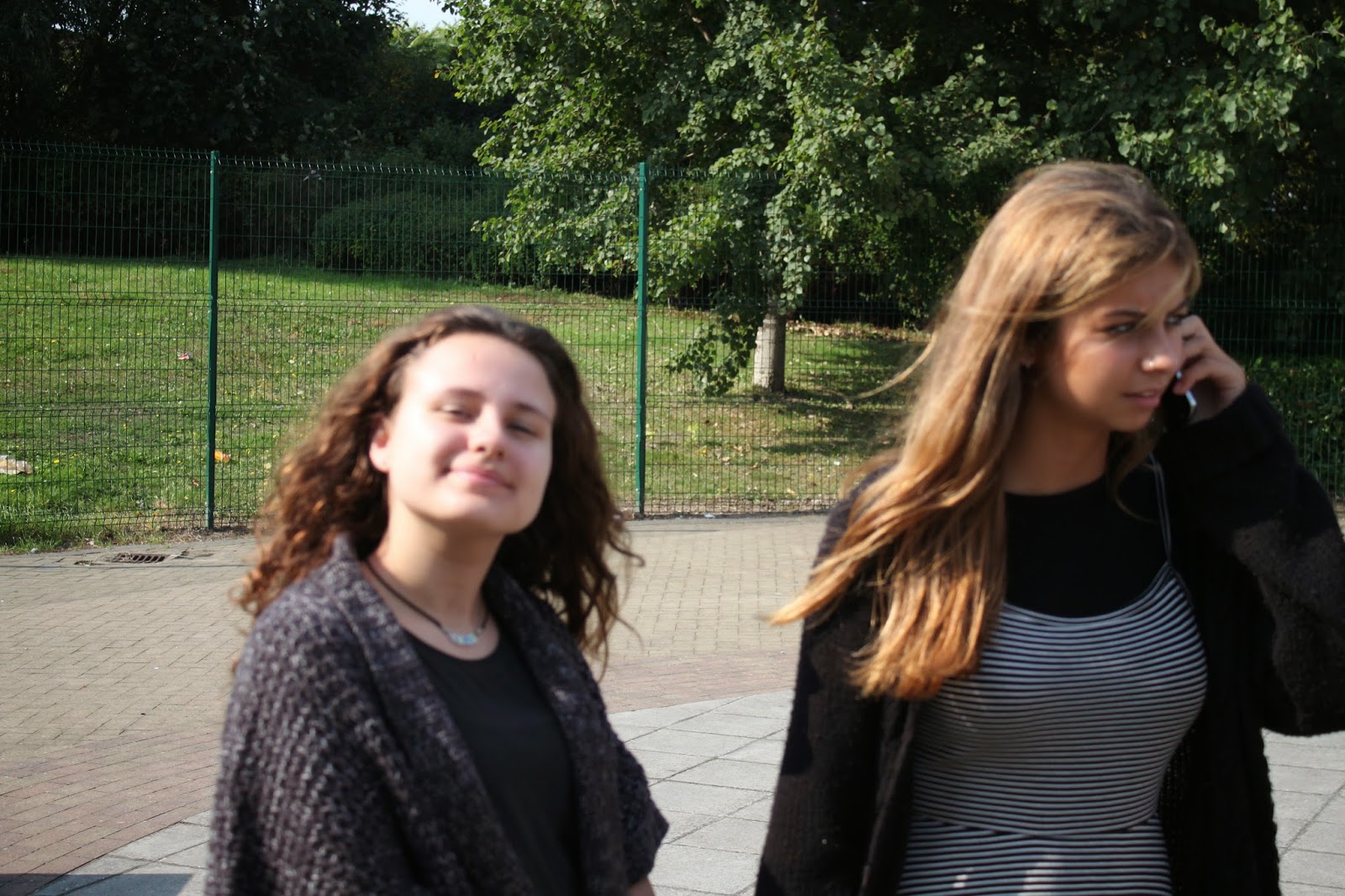 |
Two shot
|
A two shot contains two people, it can either represent a conversation between the two, suspense or tension because it's only focusing on the two.
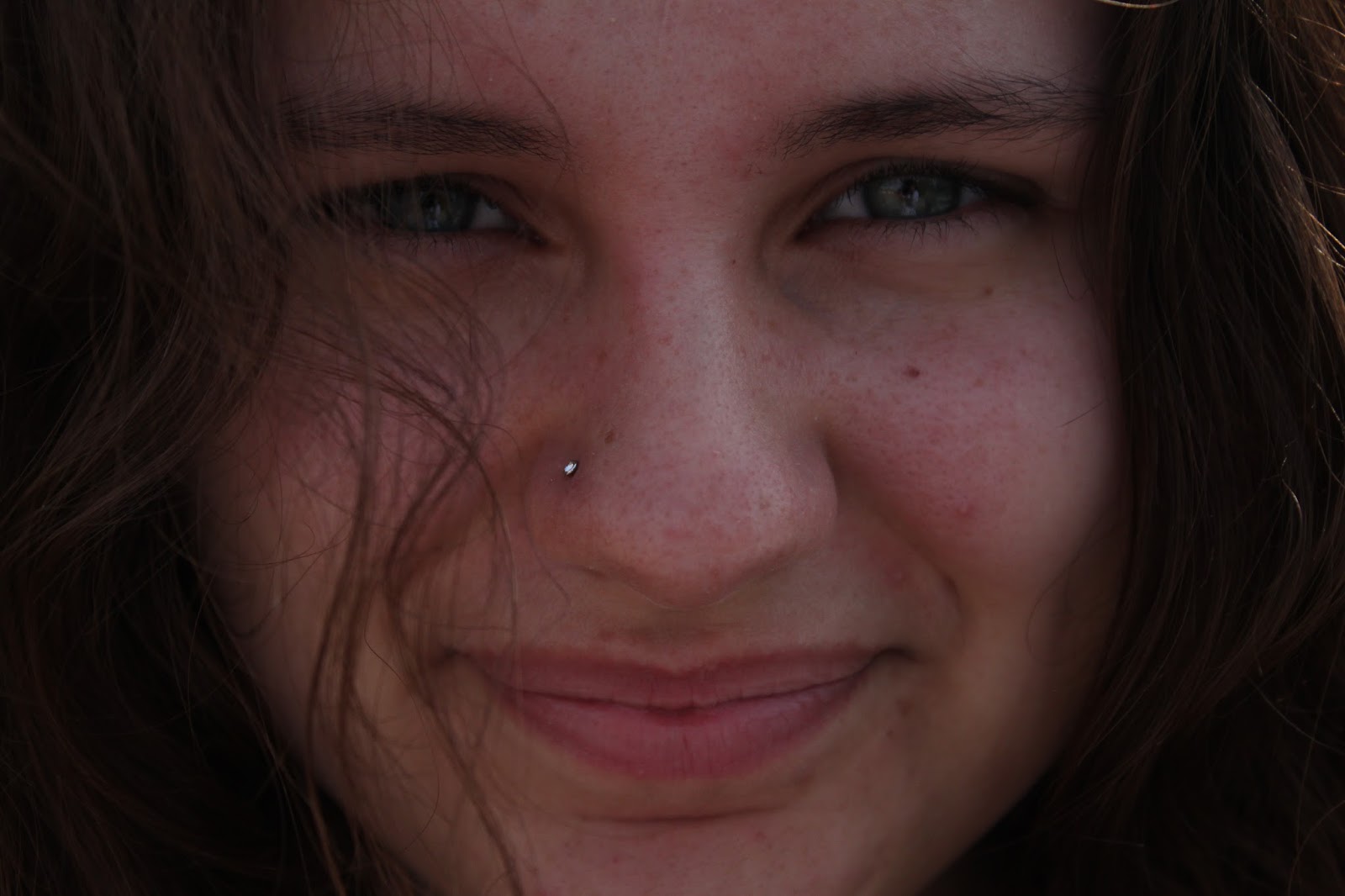 |
| Extreme close up |
An extreme close up {ECU} is a shot which zooms right into the character's face / object to either show emotion or to focus on the object.
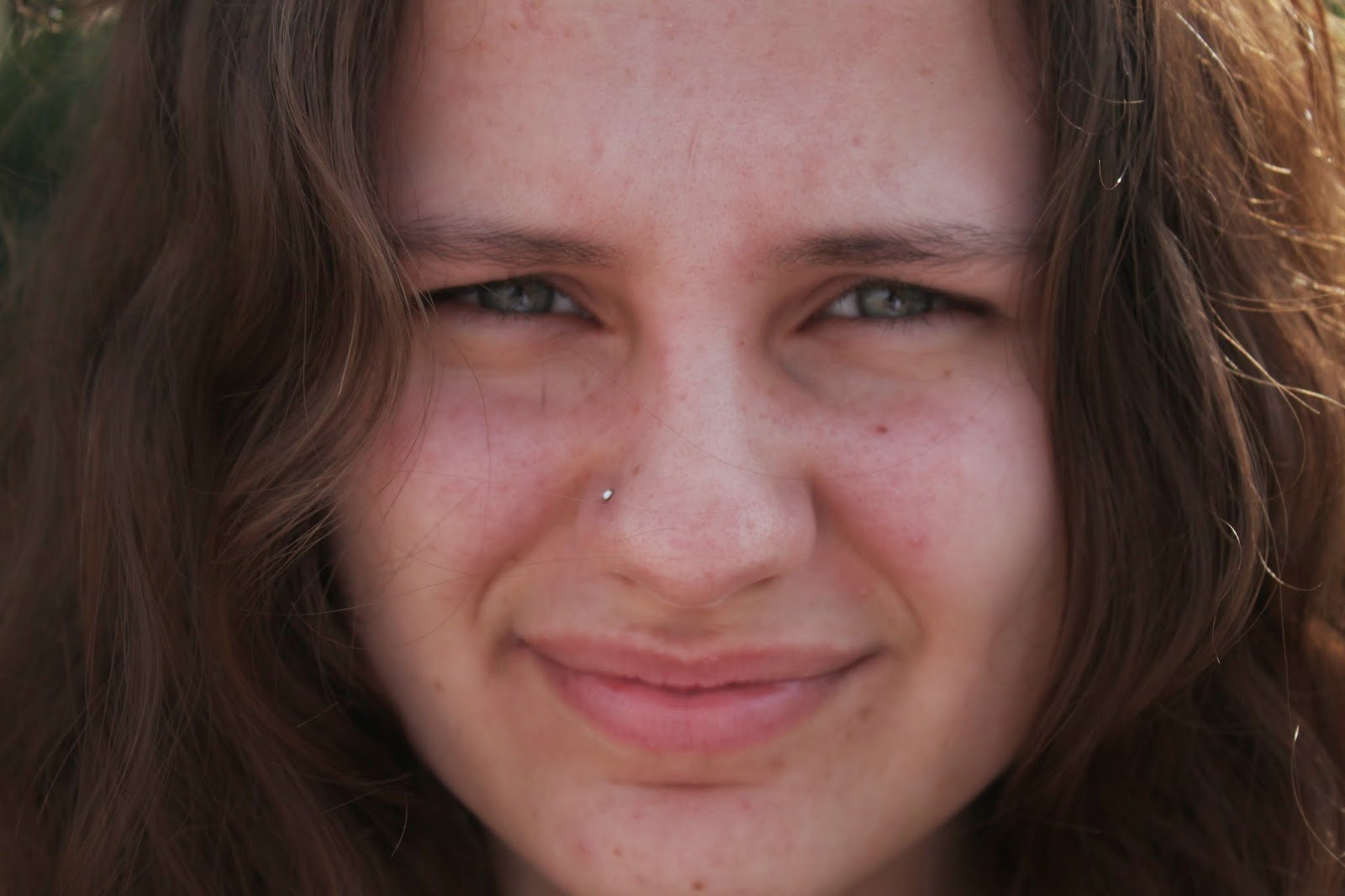 |
| Medium close up |
A medium close up {MCU} is used in the same way an ECU is used, to state the emotion of the character.
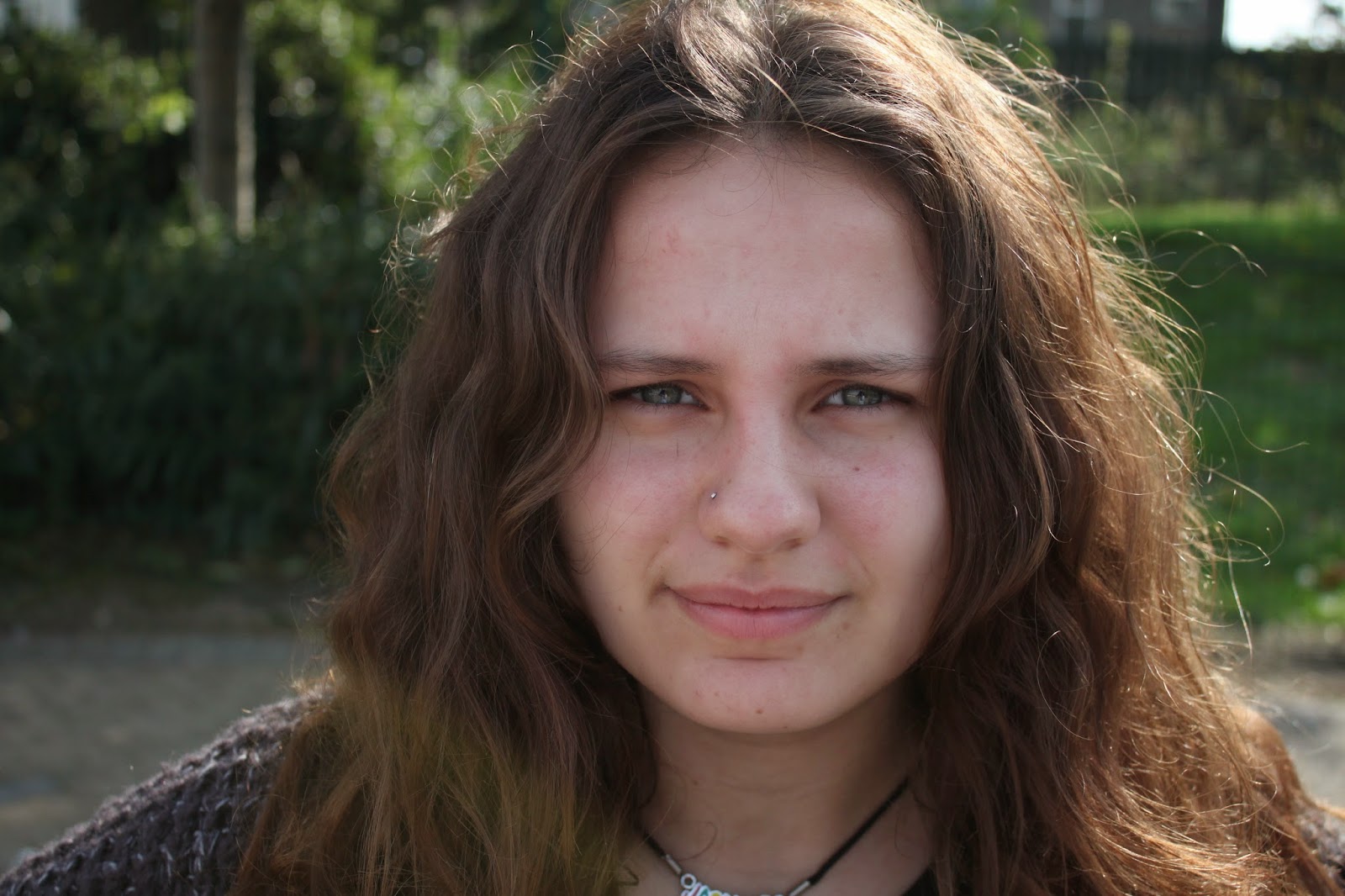 |
| Close up |
The close up is used to capture the moment of the characters face either looking around in the setting or their emotions they're currently showing e.g. crying or happy.
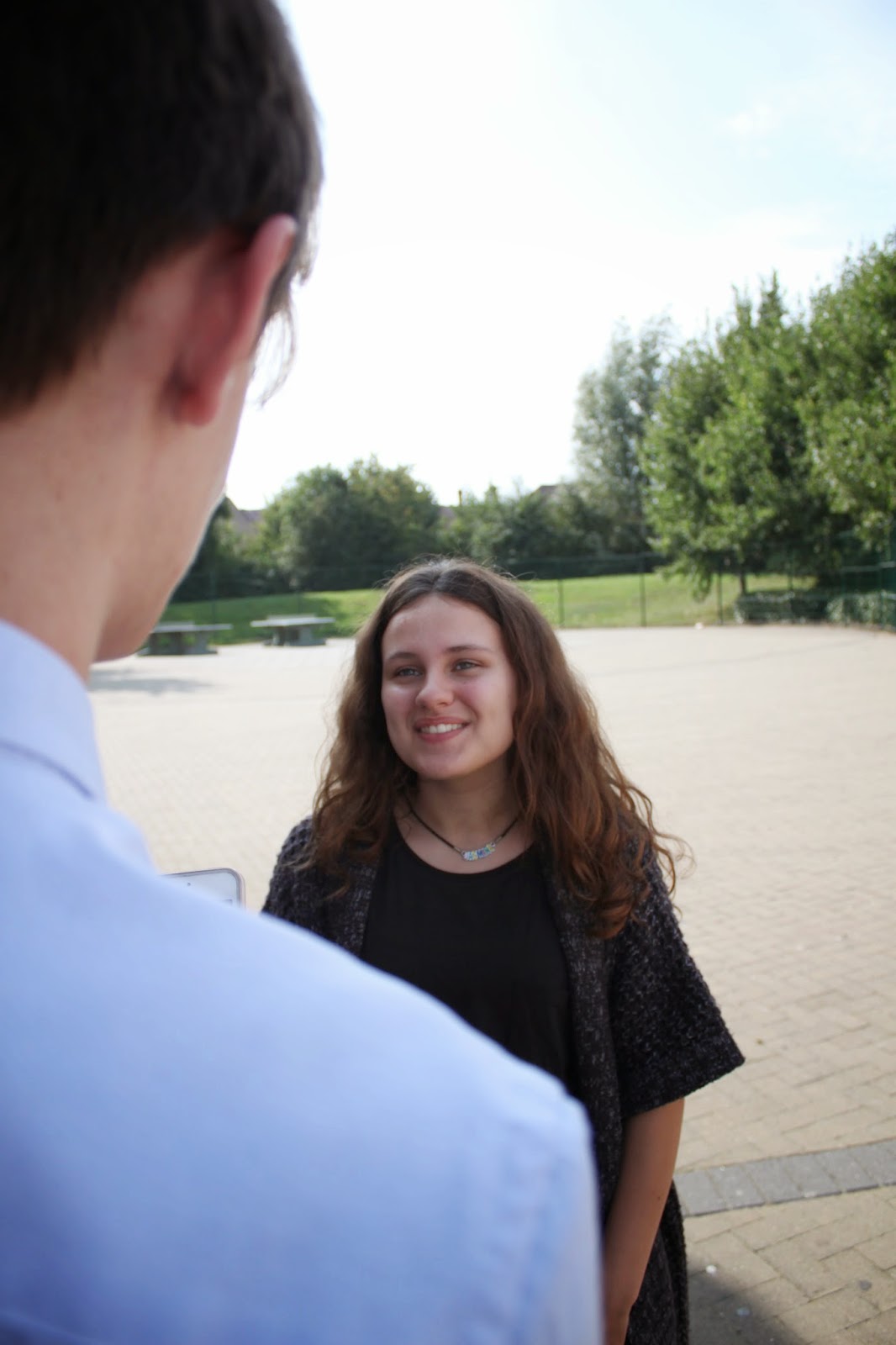 |
| Over the shoulder |
Over the shoulder shot shows conversation between two or more characters from their point of view. When looking at the photo you can tell that Jasmine is talking to me.
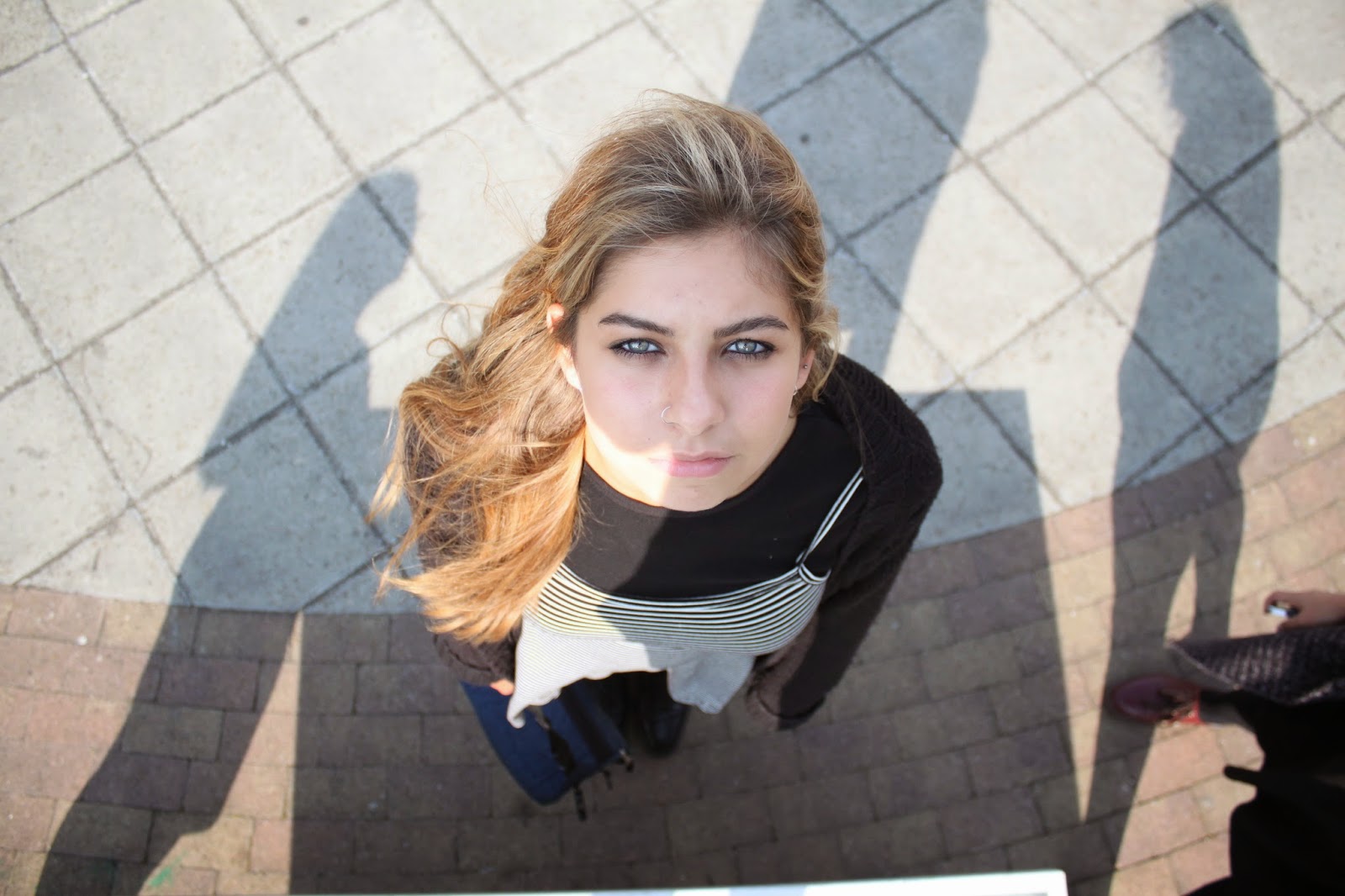 |
| High angle shot |
A high angle shot is when the camera is positioned above a character looking down on them, almost like a bird eye view.
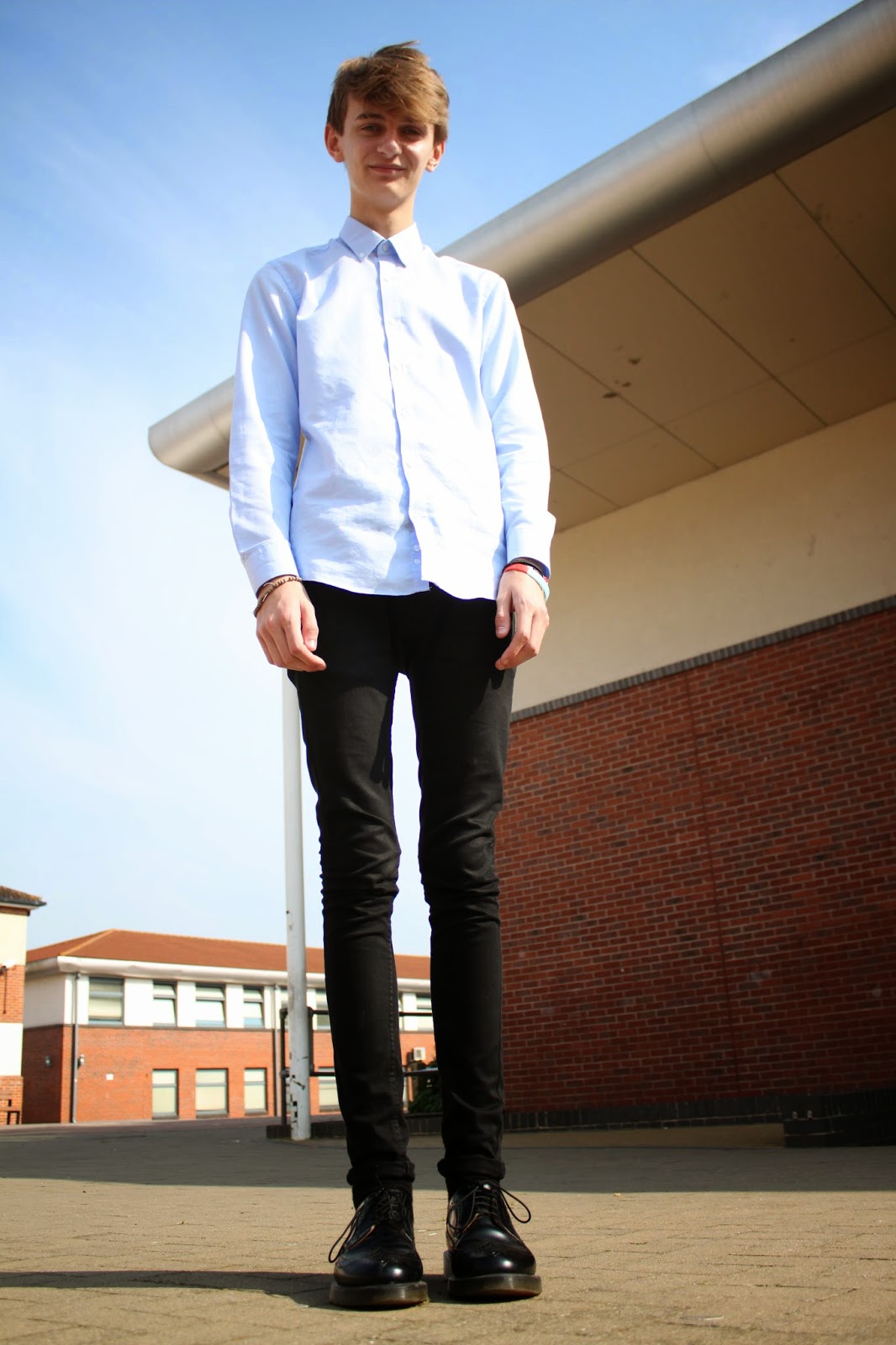 |
| Low angle shot |
A low angle shot is just the same as the high angle shot but it's instead from a lower angle making the character seem larger than they are.
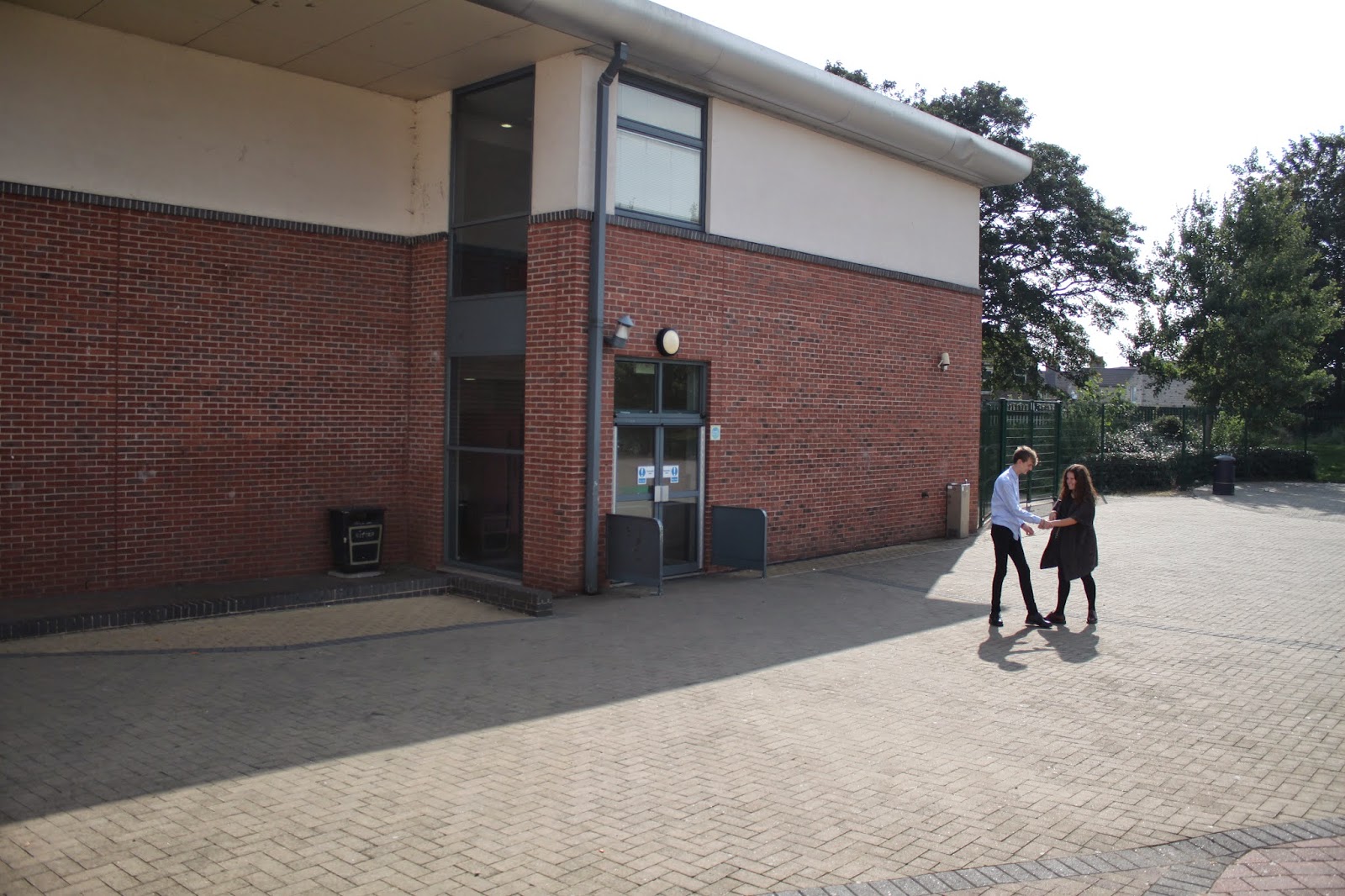 |
| Point of view |
A point of view shot shows the audience what the character can see.
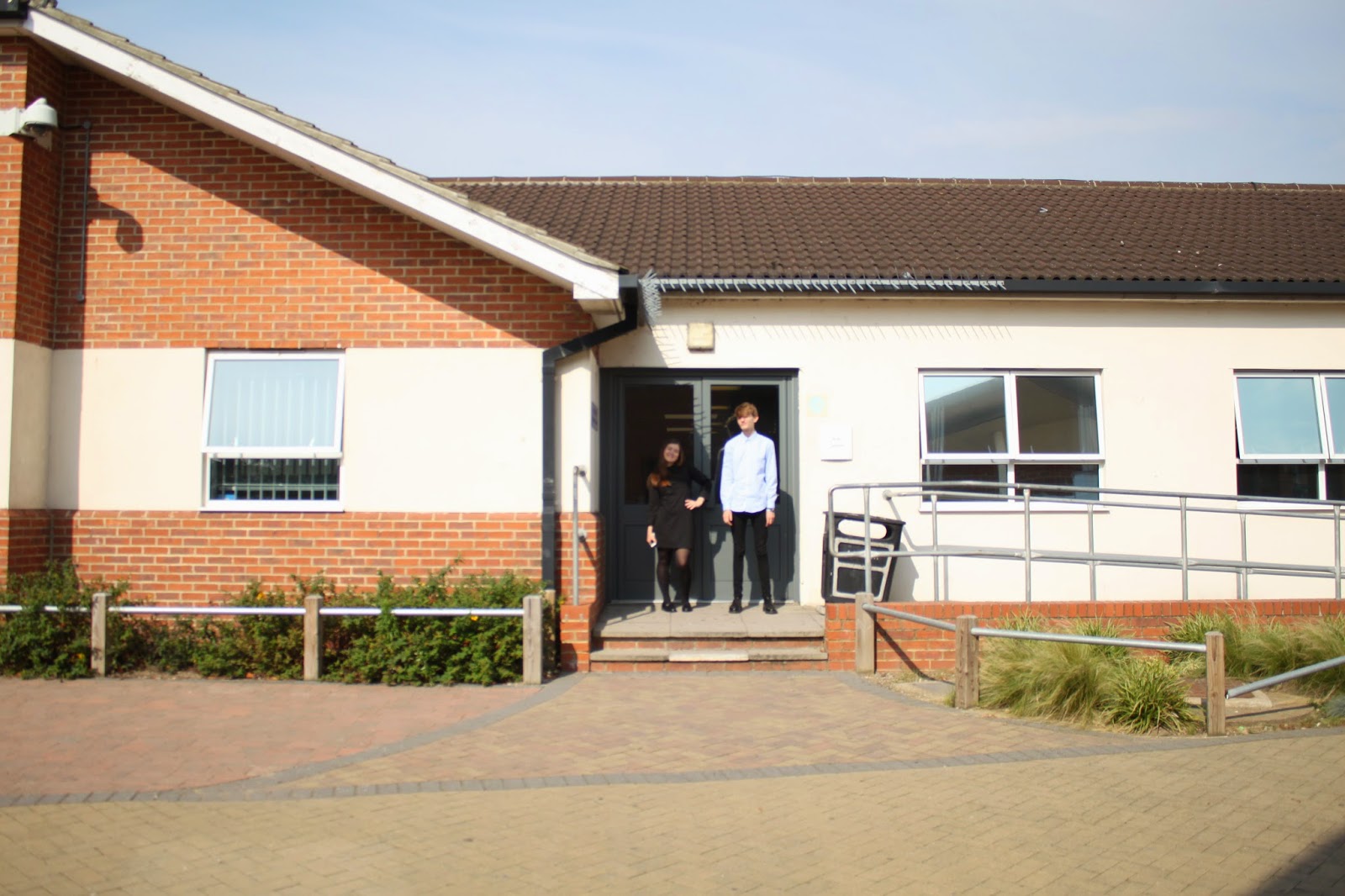 |
| Establishing shot |
An establishing shot is a shot that establishes the setting of the scene, it will represent where the characters are etc.
Sound -
There are different types of sounds that can be produced within a shot, these are the different types:
- Diegetic - Both characters and audience can hear the sound
- Non Diegetic - Only the audience can hear the sound
- Foley - Making the added sound
- Parallel -emphasis on the action
- Contrapuntal - A counterpart to what we see
- Pleonastic - Exaggerated sound
- Sound Bridge - Sound carried out to another scene
- Leitmotif - A repeated phrase of theme used to suggest an idea or character
- Synchronous - Matches the visual image
- Realism - Diegetic, real-world expectations
- Hyper-Realism - Can be both diegetic and non, exaggerated - enhancing the character
- Unrealism - Non diegetic, not the norm
- Wild track - Non diegetic, but natural recorded sounds added
- Dialogue track - added voice suited to the character
Mise-en-scene -
Mise-en-scene is a french term which means, what is shown in a shot or frame it's essential as it communicates with the audience important information such as dialogue, props etc. There are five elements to mise-en-scene which conclude of:
- Settings / sets
- Costume / make-up - immediately tells the audience whether it's a past or present time, the character's personality and class.
- Lighting / colour - Colour will give current connotations such as red meaning danger etc. Lighting can emphasis tension and other state of emotions.
- Props - Can draw attention to certain important props e.g a gun.
- Performance - shows the audience clear facial expressions so you know how the character is feeling. Also, their body language can tell their attitude.
An example of mise-en-scene in photoshop:
Editing -
Editing is a post-film activity which is key in order to create a successful film, editing can speed on scenes which can signify a conversation between two or more characters or alternatively slow down the scenes to create suspense. There are many types of cuts that could also add to the emphasis of suspense such as jump cuts which add to the pace of scenes. A shot/reverse shot can also state conversations.
This is an example of editing:








